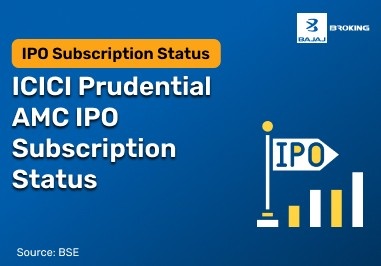A disciplined and considered process is needed for investing in a bear market because market declines always bring out strong emotions that cloud judgment and generate poor investment choices. When in such downtimes, the sound strategy is to invest in high-quality, fundamental companies. They usually possess well-balanced accounts, consistent cash flow, and robust business designs, so these companies are apt to ride economic downturns successfully.
Another astute strategy is diversification. Diversifying investments across industries, asset classes, and geography can minimize aggregate risk and help protect against significant losses. Defensive industries like healthcare, consumer staples, and utilities tend to perform relatively well during bear markets since demand for these services is constant even in times of economic downturn.
Investors can also invest in stocks that pay dividends. They yield a regular income, which is particularly useful when capital gains are scarce. Again, systematic investment plans such as rupee cost averaging can also reduce the impact of market volatility by spreading the cost of purchase over a period.
For investors with long-term horizons, bear markets offer opportunities to purchase quality assets at bargain prices. Having a clear mind focus on long-term objectives, as opposed to panicking in reaction to short-run market fluctuations, is essential.
Finally, the secret to intelligent investing during bear markets is to be calm, knowledgeable, and patient. Through a well-disciplined approach and persistence, investors can ride out bear markets more boldly and possibly come out even stronger when the markets improve.
What is a Bear Market?
A bear market refers to a prolonged period of declining asset prices, generally marked by a fall of 20% or more from recent peaks. This downturn is not limited to a specific asset class—it can impact equities, bonds, commodities, or even real estate. What defines a bear market is not just the numerical decline, but the broader atmosphere of fear, pessimism, and reduced investor confidence that accompanies it. Investors may begin to sell off assets in anticipation of further losses, often triggering a downward spiral that feeds on itself.
These market conditions are usually associated with unfavorable macroeconomic factors. Rising inflation, increasing interest rates, falling corporate profits, and rising unemployment can all be responsible for the beginning of a bear market. Investor sentiment changes drastically during such times, shifting from optimism to caution or even panic, which can worsen the fall.
But what one must realize is that bear markets are a natural part of long-term economic and financial cycles. While they are uncomfortable, they play a purpose by bringing overvalued markets back into line and setting the stage for more sustainable growth. History proves that markets always rebounded from declines, frequently coming back stronger in the next bull cycle.
For investors, recognising a bear market for what it is—a temporary phase—can make a significant difference. Those who remain calm, focused on fundamentals, and strategically adapt their portfolios often find opportunities even in adverse conditions. By viewing a bear market as a chance for recalibration rather than retreat, investors can position themselves well for future gains.
Why Smart Strategies Matter in Market Downturns
Emotional Control:
In a bear market, emotions like fear and panic often drive irrational decisions. Smart strategies help investors avoid making hasty moves that could lead to significant losses, such as panic selling or abandoning well-planned investments.
Mitigating Losses:
A well-thought-out strategy ensures that investors can manage risk effectively during a downturn. Risk management tools, such as stop-loss orders or hedging, can limit potential losses while keeping the portfolio intact.
Capitalising on Opportunities:
A bear market can also bring special opportunities, as certain stocks or sectors can become undervalued. Clever strategies include spotting these opportunities and investing in companies with good long-term prospects at bargain prices.
Diversification:
Reducing exposure by diversifying over various asset classes, industries, or geographical regions can help curb the effects of a fall on a portfolio. A diversified method ensures that in case one sector is falling behind, others could act as cushions.
Focus on Fundamentals:
In times of market declines, it is crucial to emphasize the fundamental health of investments or businesses, and not short-term market movements. Wise strategies include undertaking extensive research and giving importance to investing in strong, financially stable businesses.
Long-Term View:
Bear markets are generally short-term, followed by the recovery period. A wise strategy focuses on the preservation of a long-term investment horizon, not allowing short-term declines to ruin long-term objectives.
Positioning for Recovery:
Another important element of smart strategies is positioning for the eventual recovery stage. By remaining invested in quality assets and positioning the portfolio to match future trends, investors are able to capitalize on market rebounds.
Proven Strategies for Investing During Bear Markets
Strategy
| Description
|
Portfolio Diversification
| Spreading investments across different asset classes (stocks, bonds, real estate, etc.) reduces exposure to any single asset or sector, lowering the risk of significant losses.
|
Invest in Government Bonds
| Government bonds are considered a safe-haven investment during market downturns due to their low risk. They offer steady and lower-risk returns.
|
Focus on Quality Stocks
| Investing in established companies with strong financials, stable earnings, and a history of resilience helps investors navigate downturns. These stocks are more likely to withstand market fluctuations.
|
Dollar-Cost Averaging
| This strategy involves investing a fixed amount of money at regular intervals, regardless of market conditions. This approach helps smooth out the purchase price over time and can reduce the impact of short-term volatility.
|
Defensive Sectors
| Sectors such as utilities, healthcare, and consumer staples tend to be less sensitive to economic downturns. Investing in these sectors can provide stability during market volatility.
|
Dividend Stocks
| Dividend-paying stocks can provide a steady income stream, even during market downturns. These stocks tend to be more stable and less volatile, offering downside protection.
|
Focus on Long-Term Growth
| A bear market is temporary, and markets eventually recover. By maintaining a long-term investment horizon and resisting the temptation to make rash decisions, investors can position themselves for future growth.
|
Rebalance Your Portfolio
| Regularly reviewing and adjusting the portfolio ensures it aligns with long-term goals and risk tolerance. Rebalancing helps avoid excessive exposure to underperforming assets during a downturn.
|
Look for Undervalued Assets
| During bear markets, some stocks or sectors become undervalued. Identifying high-quality companies trading at discounted prices can provide good opportunities when the market recovers.
|
Use Hedging Strategies
| Hedging through options, inverse ETFs, or other derivatives can provide protection against downside risks. This strategy can offset losses in the underlying assets during market declines.
|
Stay Liquid
| Maintaining cash or liquid assets in your portfolio allows flexibility to buy undervalued assets when opportunities arise. This strategy also helps manage risk in uncertain markets.
|
Invest in Low-Cost Index Funds
| Low-cost index funds provide exposure to a broad range of stocks, reducing the risk of poor performance from any single company. These funds tend to be less volatile and can recover quickly after a downturn.
|
These strategies provide a range of approaches to safeguard investments during bear markets. By employing a combination of these tactics, investors can reduce risk, capitalise on opportunities, and maintain long-term financial stability.
Risk Management Techniques to Minimise Losses
During a bear market, it's important to employ risk management techniques that can limit potential losses. These strategies can help ensure that your portfolio remains balanced and protected against significant declines.
Stop-Loss Orders
A stop-loss order automatically sells a security when it drops to a certain price.
This helps limit potential losses and prevents emotions from interfering with investment decisions.
It is especially useful in volatile markets where price drops can be rapid and unexpected.
Investors can choose either a fixed stop-loss or a trailing stop-loss based on risk tolerance.
Hedge Your Investments
Hedging involves using financial instruments like options or inverse ETFs to protect a portfolio from downward trends.
For example, buying put options allows investors to sell assets at a predetermined price, even if the market crashes.
Inverse ETFs can move opposite to market indices, offsetting losses in other investments.
Though hedging can involve costs, it offers a form of insurance in times of uncertainty.
Portfolio Rebalancing
Over time, market movements can skew your asset allocation (e.g., more equities than intended).
Rebalancing involves selling overperforming assets and buying underperforming ones to return to your target mix.
This ensures your portfolio remains diversified and aligns with your risk appetite and financial goals.
Regular rebalancing (e.g., quarterly or annually) keeps emotions in check and instils discipline.
Avoid Using Leverage
Leverage means borrowing money to invest, which can amplify both gains and losses.
In a bear market, the risk of losses increases significantly when leverage is involved.
Interest on borrowed capital can also erode returns further, making it harder to recover after a loss.
During downturns, it’s safer to rely on owned capital and avoid unnecessary financial stress.
Maintain Liquidity
Keeping a portion of your portfolio in cash or easily accessible assets can provide flexibility.
Liquidity allows you to take advantage of buying opportunities when the market is down.
It also acts as a cushion to cover expenses without needing to sell investments at a loss.
Stay Informed and Avoid Panic
Monitoring market trends, news, and economic indicators helps in making informed decisions.
Avoid panic selling, as this often leads to locking in losses rather than riding out the downturn.
Patience and a long-term view are crucial during turbulent times.
By following these strategies, investors can reduce risk exposure and better protect their portfolios in unpredictable markets.
Behavioral Finance: Controlling Emotions in a Downturn
In bear markets, investor sentiment is of paramount importance in making decisions. Emotional stress due to declining prices, bad news, and doubt can result in panic decisions—sometimes at the expense of long-run financial well-being. This emotional bias is the central concern of behavioural finance, which studies how mental factors influence investment choices.
Fear is a powerful emotion during downturns. Investors may rush to sell assets at a loss, thinking they are avoiding further declines. However, this reactive behaviour often results in locking in losses and missing out on the eventual market recovery. Similarly, some investors avoid the market altogether out of anxiety, potentially missing valuable buying opportunities when prices are low.
To control these impulses, it’s important to adopt a structured, long-term investment strategy. Having a clear financial plan with defined goals can serve as a roadmap during volatile periods. Instead of reacting to short-term price changes, disciplined investors stay focused on their objectives and make informed decisions based on data and research.
Regularly reviewing your portfolio, while resisting the urge to over-manage it, can also help maintain perspective. Consulting with financial advisors or using robo-advisory tools that rely on data rather than emotion can further remove personal bias from investment choices.
Staying informed through credible sources and avoiding sensational headlines is equally important. Emotional resilience in investing doesn't mean ignoring risk—it means acknowledging uncertainty while making decisions rooted in strategy, not fear. Ultimately, behavioural discipline can prevent costly mistakes and keep investors on track through downturns and beyond.
Long-Term vs Short-Term Investment Approaches
Investing during a bear market presents different considerations depending on whether you're focused on long-term or short-term goals. Here's how each approach differs:
Long-Term Investment Approach
Hold steady: Investors with long-term goals often view bear markets as a natural part of the market cycle. Instead of reacting emotionally, they remain patient, allowing investments time to recover and grow over the years.
Focus on fundamentals: Choose companies with strong financial health, solid management, and a resilient business model. These fundamentals increase the likelihood of a strong rebound once the market stabilises.
Reinvest dividends: Reinvesting dividends during a downturn can help accumulate more shares at lower prices, leading to greater gains when markets rise.
Avoid market timing: Long-term investors typically avoid the risks of trying to predict market highs and lows. They stay invested, trusting in the power of compounding and time.
Stick to your plan: A disciplined strategy and regular reviews ensure that long-term investors stay aligned with their financial goals, even in volatile times.
Short-Term Investment Approach
Adapt quickly: Market volatility can present both risks and opportunities for short-term investors. Being nimble allows them to take advantage of price swings.
Focus on liquidity: Short-term strategies often favour investments that can be easily converted into cash, allowing for swift action if needed.
Consider safe assets: Assets like treasury bonds, money market funds, or fixed deposits are less volatile and may provide short-term protection.
Use technical analysis: Short-term investors may rely on charts and patterns to anticipate price movements and guide trading decisions.
Set exit points: Define clear entry and exit strategies to avoid emotional trading and minimise losses during market dips.
Understanding your financial timeline and risk appetite can guide whether a long-term or short-term investment strategy is right for you—especially in uncertain bear market conditions.
Conclusion
Navigating a bear market can be daunting, but with thoughtful planning and a strategic approach, investors can manage the risks while preparing for future opportunities. Bear markets are a natural part of economic cycles, often triggered by broader macroeconomic factors such as inflation, rising interest rates, or geopolitical tensions. Rather than reacting out of fear, successful investors adopt a long-term mindset and adjust their strategies to fit the changing market landscape.
Smart investment choices—such as diversifying across asset classes, focusing on quality stocks, or allocating funds to defensive sectors—can help cushion the impact of a downturn. Equally important is managing risk through techniques like rebalancing and stop-loss orders, which can help maintain portfolio health.
Behavioural discipline plays a vital role during these times. Controlling emotional impulses and resisting the urge to sell hastily can prevent costly mistakes. Investors who stay calm and committed to their goals are better positioned to benefit from the eventual market recovery.
Ultimately, while bear markets test financial resilience, they also offer the chance to strengthen portfolios and build wealth over time. With the right tools, mindset, and strategies, investors can emerge stronger and more confident for the journey ahead.














